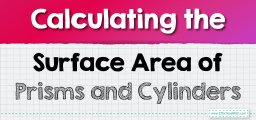How to Understand Angles in Quadrilaterals

- Square: All angles are right angles, each measuring \(90^\circ\).
- Rectangle: All angles are right angles, each \(90^\circ\).
- Rhombus: Opposite angles are equal.
- Parallelogram: Opposite angles are equal; consecutive angles are supplementary (add to \(180^\circ\)).
- Trapezoid: Angles adjacent to the parallel sides are supplementary.
Examples
Practice Questions:
- In a rectangle, if one angle measures \(85^\circ\), what are the measures of the other three angles?
- In a rhombus, if one angle is \(130^\circ\), what is the measure of its opposite angle?
- Given a general quadrilateral with angles \(A\), \(B\), \(C\), and \(D\), if angle \(A = 90^\circ\), angle \(B = 80^\circ\), and angle \(C = 100^\circ\), find angle \(D\).
- In a rectangle, all angles are right angles, each measuring \(90^\circ\). Thus, the given angle is not possible for a rectangle.
- In a rhombus, opposite angles are equal. Thus, if one angle is \(130^\circ\), its opposite angle is also \(130^\circ\).
- Angle \(D = 360^\circ – (90^\circ + 80^\circ + 100^\circ) = 90^\circ\).
Original price was: $109.99.$54.99Current price is: $54.99.
Original price was: $109.99.$54.99Current price is: $54.99.
Original price was: $114.99.$54.99Current price is: $54.99.
Related to This Article
More math articles
- Understanding Triangles: A Comprehensive Guide to Their Classification and Properties
- FTCE General Knowledge Math Formulas
- Who is the Greatest Mathematician of all time?
- The Ultimate HiSET Math Course (+FREE Worksheets & Tests)
- 6th Grade Georgia Milestones Assessment System math Practice Test Questions
- How to Do Percentage Calculations? (+FREE Worksheet!)
- How to Prepare for the DAT Quantitative Reasoning Math Test?
- What Skills Do I Need for The CBEST Math Test?
- SAT Math Level 2 Calculator Tips to Boost Your Score
- How to Find Average Rate of Change of a Function?




























What people say about "How to Understand Angles in Quadrilaterals - Effortless Math: We Help Students Learn to LOVE Mathematics"?
No one replied yet.